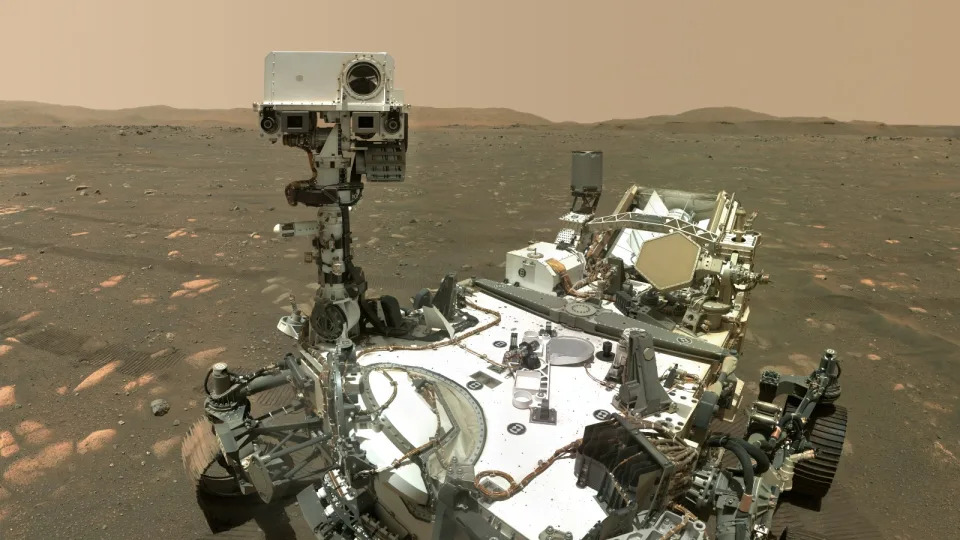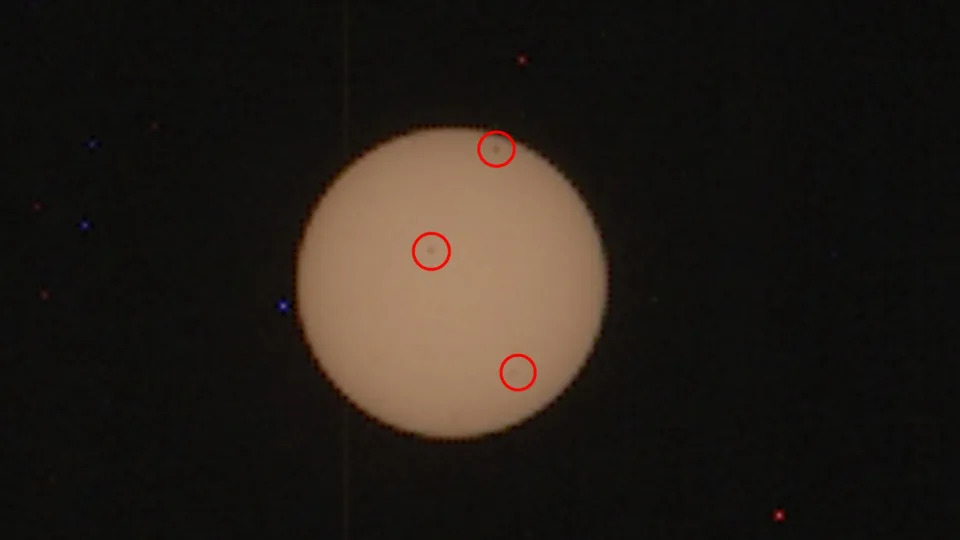Harry Baker
Wed, July 26, 2023

A picture of the Perseverance rover on Mars
In their quest to identify and track potentially dangerous sunspots hidden on the far side of the sun, scientists have turned to an unlikely ally: NASA's Perseverance rover on Mars.
Normally, the far side of the sun remains hidden from us and our space telescopes, which are positioned in orbit around Earth or at our planet's Lagrange points, where objects can be permanently stationed. This means that we do not have a clear view of what is happening on the far side of the solar surface. As a result, astronomers are often surprised by giant sunspots that appear suddenly on the sun's near side as our home star rotates at the heart of the solar system.
Large sunspots are more likely to spit out powerful solar flares and coronal mass ejections (CMEs) that can slam into Earth and trigger potentially dangerous geomagnetic storms, regardless of whether we can see the dark patches. This means we can be caught off guard by extreme space weather events. In January, for example, a hidden sunspot on the sun's far side spat out a surprise X-class flare — the most powerful class of solar flare — which narrowly missed Earth.
But the Red Planet is currently positioned toward the opposite side of the sun as Earth is, which gives Perseverance a clear view of the sun's far side. Using images of the sun taken by the rover's two Mastcam-Z cameras, scientists can detect large sunspots before they become visible to us, thereby improving space weather predictions, Spaceweather.com recently reported.
Related: See the first clear images of 'sun rays' on Mars in eerie new NASA photos

An image of the sun with three large sunspots circles by a red ring
In recent weeks, Perseverance has spotted two major sunspots before they launched powerful solar storms toward Earth. The rover spotted a monster sunspot that eventually grew to be around 10 times wider than Earth and launched an X-class flare that hit our planet on July 2. Perseverance also glimpsed a sunspot that helped to launch a "cannibal CME" that hit our planet on July 18.
These sunspots, and others like them, can also be detected by a method known as helioseismology, which measures vibrations in the sun's magnetic field to produce an echo of the far side. However, this technique can often be unpredictable and fail to correctly identify the scale of larger sunspots, according to Spaceweather.com.
Perseverance's images have a low resoltuion, and they can be used only to identify sunspots that are more than 9,300 miles (15,000 kilometers) in diameter, or roughly as wide as 1.2 Earths. But this still allows the rover to catch around 40% of sunspots and most of the ones that could do us harm, which makes it a great tool to use alongside helioseismology when Mars is orientated in the right place, researchers wrote in a paper published in the Bulletin of the American Astronomical Society in January.

The sun setting on Mars
This is even more helpful considering the sun is currently ramping up toward the solar maximum, the most active phase of the roughly 11-year solar cycle, which could hit us sooner and harder than initially expected. As a result, the number of sunspots is higher than it has been in more than 20 years.
related stories
—1 million-mile-long plasma plume shoots out of the sun in stunning photo
—Photographers capture the exact moment a gargantuan storm blasts out of the sun during a total solar eclipse
—Rising and setting 'Omega sun' melts into a 'lava-like blob' in trippy mirage photos
Perseverance's view of the sun's far side will actually improve in the coming months as Mars becomes even more aligned with the side of the sun hidden from Earth, which will help the robot to track increasingly powerful storms. However, the rover will likely be unable to assist us during some of the peak months of the solar maximum.
This is not the first time that scientists have turned to the Red Planet to track sunspots. In 2015, in the months following the previous solar maximum, scientists used NASA's Curiosity rover to snap pictures of the sun's far side, Live Science's sister site Space.com reported at the time. But Curiosity's images had a lower resolution than Perseverance's pics, and solar activity was already starting to slow down by then.
No comments:
Post a Comment